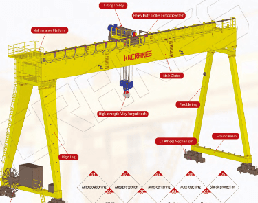mte12
Structural
- Mar 1, 2022
- 142
Regarding oblique travel forces for a Portal crane, is it correct to estimate using AS 1418.1 Section 4.6.5?
The capacity of the crane can be up to 500t.
From the standard, the steering force "POT" is proportional to the vertical load, multiplied by the coefficient of frictional contact (KO).
And KO ranges from 0.12 to 0.3.
See attached.
So can the load actually be up to 30% of the vertical load?
AS 1418.1 does say:
“The magnitude of the steering force (POT) depends on the type of crane drives, the crane geometry, and on the coefficient of frictional contact (KO) which is determined by the maximum oblique travel gradient (α).”

The capacity of the crane can be up to 500t.
From the standard, the steering force "POT" is proportional to the vertical load, multiplied by the coefficient of frictional contact (KO).
And KO ranges from 0.12 to 0.3.
See attached.
So can the load actually be up to 30% of the vertical load?
AS 1418.1 does say:
“The magnitude of the steering force (POT) depends on the type of crane drives, the crane geometry, and on the coefficient of frictional contact (KO) which is determined by the maximum oblique travel gradient (α).”

